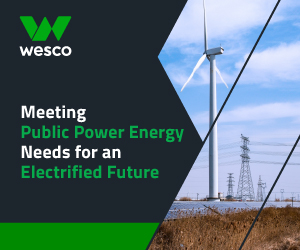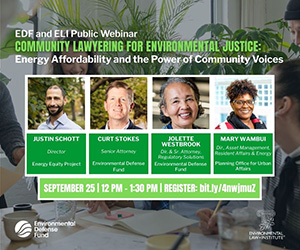FTI Consulting
Ken Ditzel is a Senior Managing Director at FTI Consulting and leads the firm’s North American energy and environmental market advisory team. Rodolfo Araujo is a Senior Managing Director at FTI Consulting and advises on corporate governance and investor engagement, focusing on ESG management, activism defense, and mergers & acquisitions. Christine DiBartolo is a Senior Managing Director in FTI’s Strategic Communications segment. Chris LeWand is a Senior Managing Director at FTI Consulting, leader of the Power, Renewables & Utilities industry practice.
A unique conference, Reuters Global Energy Transition 2022, united CEOs and changemakers from the energy, industrial, and government ecosystems. It gathered them to shed light on the defining issue of our time, and help companies meet the difficult challenge of climate change.

The conference aimed at actionable items with cross-sector conversations among experts who might not normally be speaking with each other. Here's a roundtable on the sidelines with FTI Consulting's Rodolfo Araujo, Christine DiBartolo, Ken Ditzel, and Chris LeWand about ESG.
PUF's Steve Mitnick: ESG is driving strategy. You four do different parts of it, but you work together. Which parts do you work on and work as a team?
Ken Ditzel: I plug in mainly from the E side. I come in and support clients with the Scope 1, 2, and 3 emissions accounting, help them set targets and then come up with mitigation plans on how to address their emissions over time.
I also help with TCFD scenario analysis. That's understanding the different futures for how their company might face climate change from transition risks and physical risks, and then how that's going to impact their financial statements, and eventually their credit.
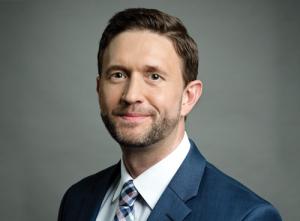 Ken Ditzel: Companies have a latitude to pick what base year they want to use for emission reductions. It’s important to pick what I would call a reasonable base. From there, decide how you’re going to meet your net-zero targets over time.
Ken Ditzel: Companies have a latitude to pick what base year they want to use for emission reductions. It’s important to pick what I would call a reasonable base. From there, decide how you’re going to meet your net-zero targets over time.
Rodolfo Araujo: My work is more on the technical side of ESG, helping clients establish or evolve their ESG programs.
My team starts by providing strategic advice to clients, helping them advance their program from point A to point B — from whatever point A is, to whatever point B should be — so you're recognized as a leader in ESG. Then we move into implementation, helping clients put into action all the recommendations we provided to them.
In a similar way, my team helps asset managers and asset owners develop their ESG strategy, conduct due diligence on new assets, and support funds with their stewardship efforts.
Our work with investors, combined with the team's experience as proxy advisors, also allows us to support our clients in their engagement with investors, helping management and directors in their efforts to maintain ongoing shareholder support for their strategic initiatives.
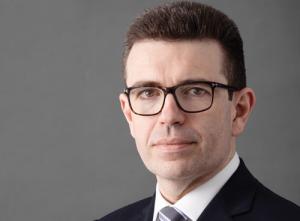 Rodolfo Araujo: Manage ESG data with the same accuracy you manage financial data. You will need accurate data to measure and evolve your ESG program, but given the SEC’s increased focus on ESG issues, data accuracy is the best way to avoid future lawsuits.
Rodolfo Araujo: Manage ESG data with the same accuracy you manage financial data. You will need accurate data to measure and evolve your ESG program, but given the SEC’s increased focus on ESG issues, data accuracy is the best way to avoid future lawsuits.
Christine DiBartolo: My work really centers around the new reality that sees ESG and sustainability as business imperatives. Businesses need to think about not just what the data is, and what they're reporting, but how they're engaging around it.
Many of our clients are asking for support because they find themselves in a critical moment that requires some level of engagement with an important stakeholder.
For example, an investor might be asking questions, employees are demanding answers, and customers are likely making buying decisions based on whether they believe a company is operating in good faith or they may be part of the supply chain for a company that needs certain levels of disclosure. In all those cases, companies need to clearly communicate their strategy and progress, while also demonstrating that they have a plan to incrementally improve over time.
That communication — how you engage around the content you have, whether you are positioned as a leader or a laggard or whether you have a plan — is vital to success. Our clients need to think about how they fill the gap if they are a laggard. And if they are a leader, they need to start building their reputation as a leader.
 Christine DiBartolo: It is not enough to just report data and facts. Stakeholders are increasingly looking for corporations to have a point of view and to be part of a solution.
Christine DiBartolo: It is not enough to just report data and facts. Stakeholders are increasingly looking for corporations to have a point of view and to be part of a solution.
We are seeing a lot more conversation about purpose-led performance and leadership. Stakeholders now expect corporations and corporate leaders to engage on financial performance as well as broader societal issues. It is not enough to just report data and facts. Stakeholders are increasingly looking for corporations to have a point of view and to be part of a solution.
What is so exciting about this work is that I am able to work with my colleagues to really drill down on the path our clients need to take to get there. Whether it's extrapolating data, figuring out how to finance, what their energy mix needs to be, what should be reported, how to get credit for the work they are doing or even how to manage shareholder proposals, we can help clients think about all of these issues in a holistic and aligned manner.
The heart of the work I do is about communicating facts and what companies are actually doing. There is a lot of pressure on companies to "say something," but in doing so they also need to be able to show they can actually follow through on that something. What has changed over time is the fact that we now have such sophisticated reporting and accounting that what a company says versus what it does are inextricably linked.
Companies are finding themselves at risk because they're saying one thing, but when you look at the facts and data, they're not actually doing it, which creates a significant reputational risk. For example, a company won't be able to hide from climate disclosure rules from the SEC in the future.
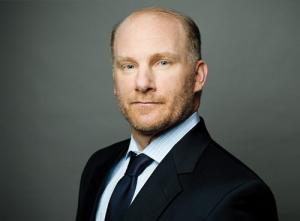 Chris LeWand: From an investor perspective, it’s where we work with different types of private capital coming in evaluating opportunities. ESG has become a core part of all due diligence programs.
Chris LeWand: From an investor perspective, it’s where we work with different types of private capital coming in evaluating opportunities. ESG has become a core part of all due diligence programs.
If a company is reporting and disclosing information, they have to own it. Because if they are saying something and reporting something different, they are opening themselves up to risk. Whether it's an adversary, competitor, NGO, or community activist, they will figure out what's happening. Ultimately, at the end of the day, ESG is a risk exercise.
Chris LeWand: A different element for me is the operationalizing of it. From the perspective of working with executive teams and with boards, how's it being put into motion within the company, what's occurring, the processes, the work, the structure, which would fall within what our team does.
From an investor perspective, it's where we work with different types of private capital coming in evaluating opportunities. ESG has become a core part of all due diligence programs. It used to be financial, operational, and commercial, but ESG is right there with it now.
On a lot of these due diligence processes, they want to understand what they're bringing on, they want to understand the opportunities, where's the company at, and make sure there's not a greenwashing element. How are they accounting for their carbon footprint? What have they done, compared to what they've said that they're going to do?
Then take that through to the technical reporting requirements. What are the rules for reporting? How are you going to measure it, and how does that correlate to the reporting?
PUF: If you get asked by a CFO or a CEO, what do you think we should be doing? What should we worry about? What's your response?
Rodolfo Araujo: The first point is to understand if they have the right governance around ESG issues. ESG is more than messaging; you need the right structure and the right people managing risks and opportunities at the board level and at the management level.
Second, I recommend they engage with stakeholders to determine what ESG issues they should prioritize in their program. When done formally, this is called an ESG materiality assessment.
From that point, our client's ESG team could start putting together an ESG strategy that should be aligned with the company's overall corporate strategy.
Last, and I cannot stress this enough, manage your ESG data with the same accuracy you manage your financial data. You will need accurate data to measure and evolve your ESG program, but given the SEC's increased focus on ESG issues, data accuracy is also the best way to avoid future lawsuits.
Another important point I always make to CEOs, CFOs, and board members is to continuously assess their efforts on a relative basis. In other words, how do your sustainability efforts compare with those of peers? You don't want to be a laggard. That's the first priority.
If you're in the middle of the pack, you might not be taking advantage of the commercial opportunities being offered to the leaders, but it is still not a terrible place to be. If you're able to move into a leadership position, you begin to open commercial opportunities. You're talking about making more money for the company. It's not just risk protection.
If you're a laggard, then you have problems, because you are facing issues with cost-of-capital access, problems retaining workforce or problems with not being allowed to participate in some of these commercial opportunities. That's a bad position to be in, and you have to move quickly to address this.
No company is perfect, and no company will, at least in this moment we are going through, ever be perfect. That's because these issues are evolving, so expect a moving target, but regularly assess yourself relative to peers.
In short, make sure you're not a laggard, and make sure you're evolving. These should be the two North Stars in any kind of ESG program.
Christine DiBartolo: I would add two more things. Make sure you're credible, and you're authentic. Those are critical because you can't just say you're going to do something without having a plan.
This is a must have for any company. Several years ago, it was a public company problem. Today, portfolio companies within private equity as well as privately held companies are just as concerned about this.
To Rodolfo's point, if you are a company that makes widgets, and sells them to a company like Walmart or Costco, you have to report to them on your performance because they have publicly said their supply chain should comply with their ESG goals.
Chris LeWand: Companies being aware of what they are and what they aren't is important. What we're seeing is the consideration of going private from public, because it's hard to move that ship, and your reputation.
If you're in a black industry versus green industry, you can only move it so far from the E side of ESG, at least. In doing so, if you take it out of the public domain, then you have different reporting communication requirements, and expectations, and that'll impact how you project your business, how you run your business.
What you see with some of the big private equity firms, they want to do right by ESG, it's important to what their investors require, but that doesn't mean just investing in green businesses. It means taking black businesses and making them the best version of themselves.
We're not going to do away with coal, oil, and gas in the near-term. That's going to be around for a long time, but how do you utilize that, and still make it the best version of what it is?
PUF: There are companies that entered into, say the baseline period, whether it's 2005, 2010, and some had high emissions, and some didn't, because of nuclear, more gas versus coal. Some are coming down, and some are not because they were already low. Is that a challenge for companies to figure out where they are, and how to demonstrate where they are going?
Ken Ditzel: Companies have a latitude to pick what base year they want to use for emission reductions. When you look at the SBTI process, that's usually 2019 or 2020, so that gets away from picking a base year of 2005, when you had high emissions.
2020 is an interesting year because of COVID. If you pick 2020, you obviously increase the bar for yourself in the sense that you generally have lower emissions than previous years.
It's important to pick what I would call a reasonable base. From there, decide how you're going to meet your net-zero targets over time.
Around benchmarking, it's important to look at how your peers are operating and understand where you stand relative to them. Doing so helps you evolve over time and improve your accounting and mitigation process.
PUF: I was almost thinking of this as compliance. You want to stay out of trouble, but evidently there is an opportunity to excel in this.
Rodolfo Araujo: Let's jump into the risk/opportunity equation through the eyes of investors. We have just finished a process for an acquisition here involving ESG. It is becoming common to hear from buyers that if there is no green light surrounding ESG issues, the deal will not go through.
Then think about how many buyers you have, what's the demand for an asset versus how the asset can be priced. If you're doing great in ESG, it means you are in a better position to be acquired. Whereas, if you're not doing great in ESG, it represents increased risk for you as a target.
Part of the process of an acquisition is to understand how an ESG profile can evolve. When it evolves, what is the additional value creation you can generate in the business?
When you're thinking from the lens of the capital markets, you are looking at a company and asking, "are there risks that mean I cannot get involved? What are the ESG opportunities to drive this business further?"
Let's use, as an example, a real estate company managing commercial buildings. One of the sustainability issues facing this industry is that everybody is trying to limit their emissions.
Tenants are beginning to look for better assets to rent so they can meet their decarbonization commitments, meaning a real estate company with more sustainable buildings will benefit from higher demand. As a result, you see a continued push from both tenants and real estate companies toward sustainable buildings.
You say, okay, it means these companies have to invest more in their buildings. So, they have some risk in terms of how they position themselves versus the competition.
On the other side, when they make the investments, they have more pricing power, they charge more per square foot, and their operational cost is lower because they modernize the buildings, which offsets the investments they're making.
In a way, they run a better ship, are making more money, and that's the big opportunity they're facing, because they have more demand for that kind of asset.
PUF: Chris, you have some utility people on your team, and one was head of procurement. I'm beginning to see procurement is important here.
Chris LeWand: How you procure, where you procure, it goes into consideration of what's the chain of emissions you're going to be responsible for as a business. Utilities is an easy one. It's an energy company. It's an energy support supply business.
With that, it's directly relevant in terms of what the carbon footprint is. With other types of businesses, you may be a widget company, but you've got to look downstream and upstream for what you're responsible for in terms of the overall carbon footprint, because of the way you run your business.
It's not because of what you do, but because of what your suppliers are doing, what your customers are doing. What does the whole value chain mean with regard to how it is you're utilizing; what it is you do. Procurement is a very important part of this now and how you procure, and what standards you're going to hold your vendors to. It's become a significant consideration.
PUF: It's ESG, but when I talk with people, the S, it almost gets lost a little. There's so much pressure on the E, so maybe that should be the focus?
Christine DiBartolo: Within the last couple of years, it's shifted considerably because when you think about what's in the S, it's not just diversity. It's how you manage health and safety, human capital, and various areas of your supply chain.
They're all important. But there's been a lens, particularly in a post-COVID world. You heard more about health and safety of employees than ever.
You were held accountable to how you manage that. Companies are now expected to engage on these topics, not just on impact to climate and environment, but impact to people.
People are a critical element of any company, which is why, while the regulatory environment has prompted change and the investment community has prompted significant change, we see another audience that's prompting change and engagement, and that is employees. If you cannot recruit or retain the top talent, you do not have a business and top talent cares about what you do for society.
Rodolfo Araujo: The governance, the G is kind of on the side in the story. There is nothing more relevant to utility companies at this point than cybersecurity, and that's inside the G.
Also, we block this in these three buckets — E, S, and G — but ESG topics cross between the buckets. These buckets are just a way to have a more organized picture, but the societal demands for companies have to be perceived in a more holistic way. Society wants companies to become better corporate citizens.
Talking again about governance, what shareholders expect from the board of directors and the managing teams, is to govern the corporation and also environmental and social risks and opportunities. It's all about management. It's making sure you put efforts together, and are going to address in a holistic way, all of these items.
PUF: Recently there's been some pushback from some states of maybe going after Blackstone, saying we don't want to hear about ESG. How should utilities maneuver there?
Chris LeWand: There's a lot to unpack. Everything from politics to investor dynamics and public sentiment, we've talked about all the different elements.
The bottom line is there's more pressure to deal with these topics. Even if a certain group doesn't want it to be the predominant subject, all groups are recognizing that it's increasingly important to deal with it.
The level of importance may vary in different parts of the country. But if you want to bring in investment funds, if you want to deal with the different parties, and you mentioned a private equity firm that's well known in this space, they're also well known for saying, look, we'll operate with black businesses as well.
They are the ones that are less carbon friendly. But think about making them better. Don't shy away from those companies but help them be better parts of the economy.
It's not just what you do, it's how you do it. There are clearly different dynamics when you think about how to deal with the PUCs, and the local government, all the way through to the investor communities.
Christine DiBartolo: It goes back to that point of making sure you're being authentic to who you are as a business. There will always be someone who does or does not like what you're doing. Public utilities certainly know this as they are often in the crosshairs of scrutiny.
But on these issues, it is important to stay true to who you are and articulate with confidence that there is a plan. These issues are not going away — customers, employees and communities have increased expectations around these issues, so it really has become a business imperative.
To put it another way, it isn't just about having an ESG strategy. It is about making sure ESG is deeply woven into your business strategy, that it's a part of your people strategy as well as your engagement strategy for communities.
It's making sure not to play to a particular group, but instead thinking about the business and how it can be credible and authentic. This goes back to the notion of purpose and values — to staying true to what they are and how they live by their mission and purpose. Thinking about the responsibility of a utility to their community or to the planet — it is making sure that they are staying on that thread line of credibility.
Global Energy Transition conversations:


